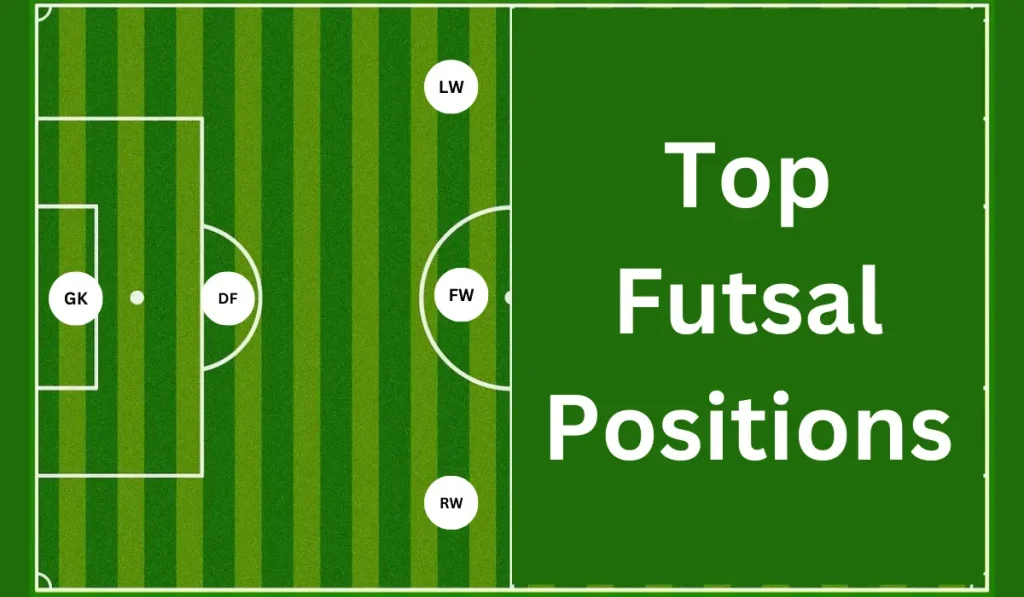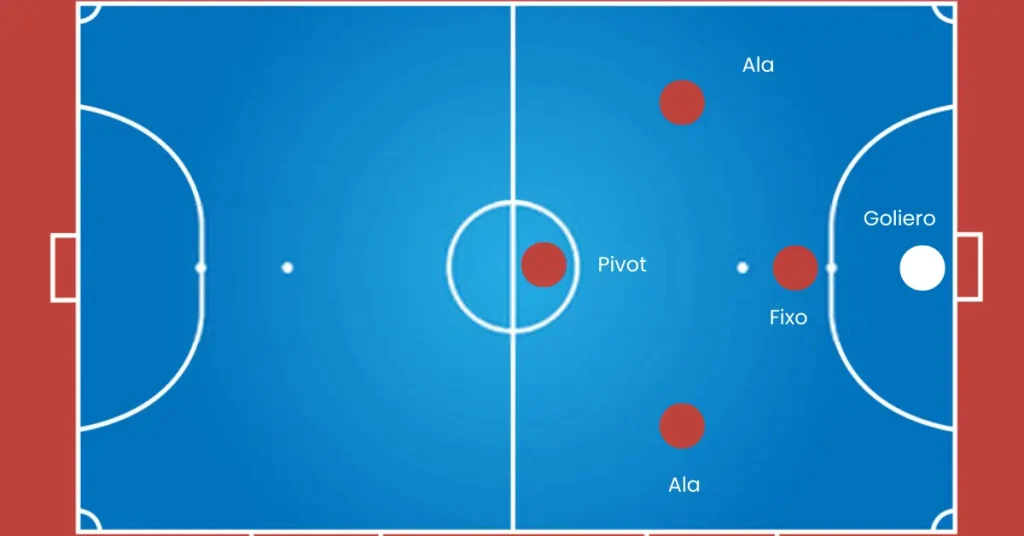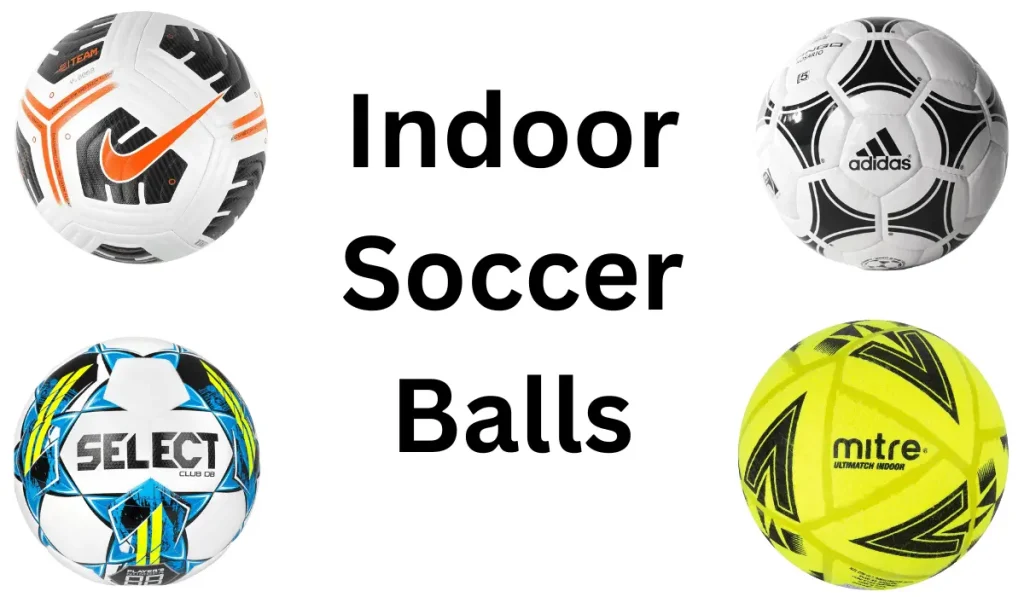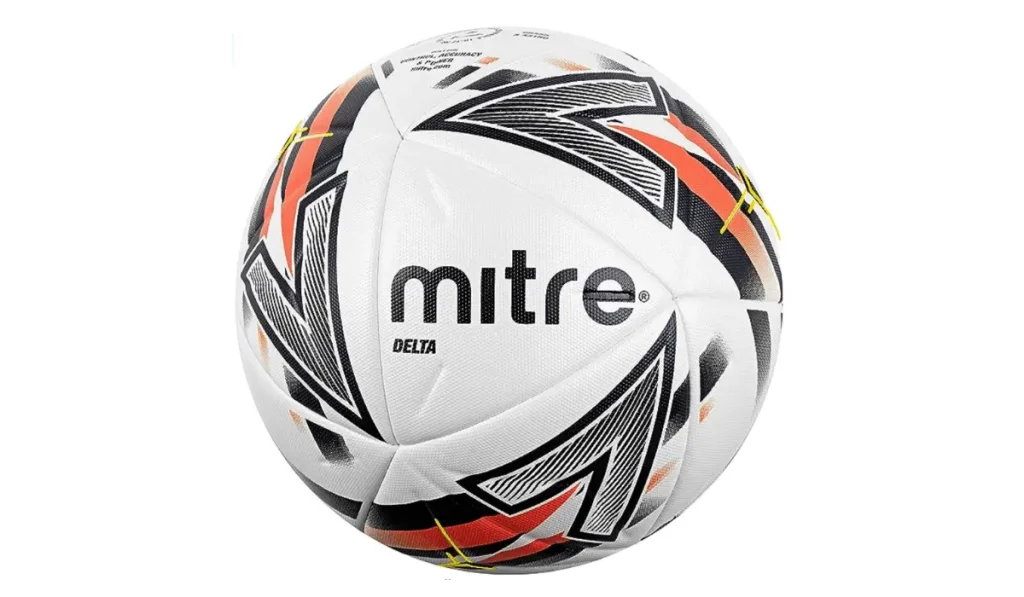Difference Between Futsal and Soccer or Football
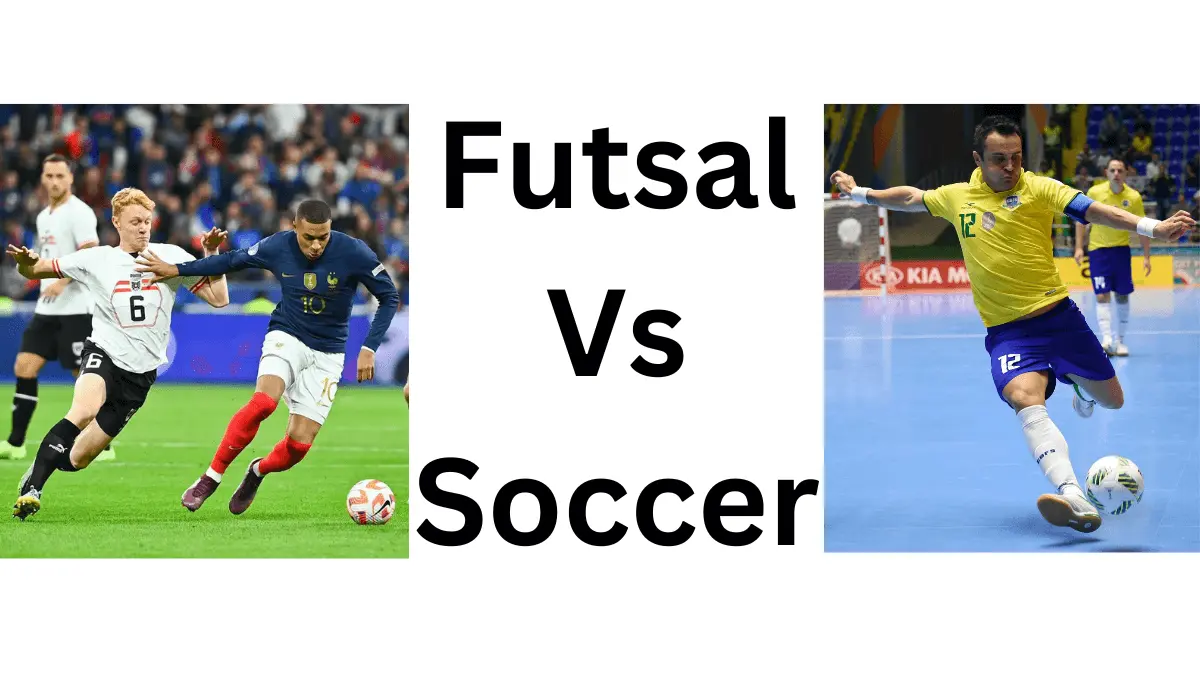
Craving the thrill of soccer but need a weatherproof fix?
Dive into futsal, an indoor game where skill reigns supreme on the hardcourt battlefield.
Futsal: The Technical Playground
Imagine five nimble players, like skilled ninjas, dancing with a heavy, compact ball on a hardcourt stage. This is futsal, a technical playground where:
- Lightning-fast passes whiz through the air
- Pinpoint control is mandatory
- Laser-sharp reflexes and video game-like footwork are essential
- Creativity explodes in tight spaces
| Key Aspects | Futsal |
|---|---|
| Players per Team | 5 |
| Ball | Smaller, heavier |
| Court | Compact hardcourt |
| Focus | Skill, agility, quick thinking |
| Experience | Thrilling, fast-paced |
Hone your touch, become a maestro of close-quarters control, and witness shots unleashed from impossible angles. Futsal is a high-octane skill showcase, leaving you breathless and craving more.
Soccer: The Strategic Battlefield
Now, picture epic battles fought on expansive, emerald fields, with eleven warriors charging across the grass. This is soccer, where power, speed, and strategic positioning rule the game.
- Feel the familiar spherical ball at your feet
- Navigate open plains with explosive runs
- Unleash powerful shots
- Master tactics and endurance
- Build athleticism to become a force of nature
| Key Aspects | Soccer |
|---|---|
| Players per Team | 11 |
| Ball | Standard size |
| Field | Large outdoor pitch |
| Focus | Tactics, positioning, endurance |
| Experience | Slower, Strategic |
Soccer offers a more strategic experience, demanding adaptability and tactical awareness as you outmaneuver your opponents on the grand stage.
Beyond the Surface
While both share the love for a round ball, their benefits bloom in different gardens:
⚽ Futsal cultivates mesmerizing technical skills, making you a magician with the ball ⚽ Soccer builds unwavering fitness and tactical awareness, transforming you into a dominant force
Embrace both disciplines and become a well-rounded player, equipped to thrive on any battlefield, be it the compact futsal court or the expansive soccer pitch.
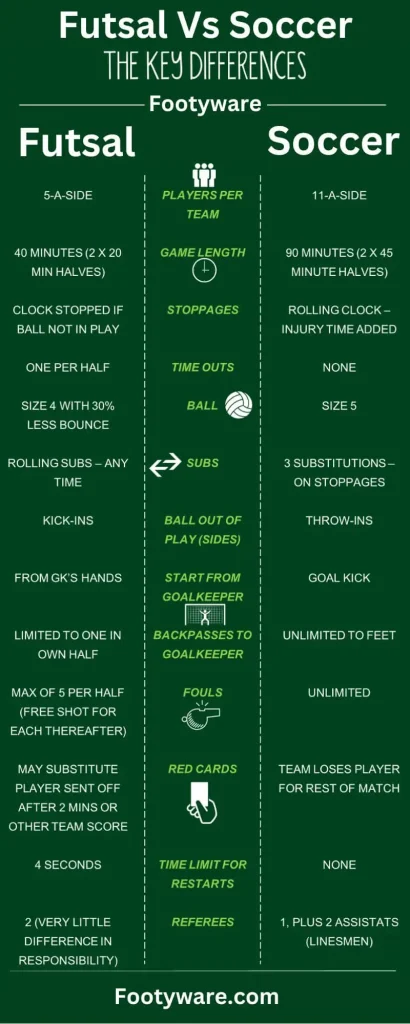
This tale of contrasts, told through the lens of the beautiful game, promises an exhilarating journey for athletes of all ages and skill levels. Whether you’re a seasoned veteran or a newcomer to the sports world, futsal and soccer offer unique challenges and invaluable experiences that will elevate your game to new heights.
So, lace up your cleats (or indoor shoes for futsal), grab a ball, and step onto the court or pitch. The choice is yours: Will you master the technical artistry of futsal or conquer the strategic battleground of soccer? Or perhaps, like the true masters of the game, you’ll embrace both and become an unstoppable force in the world of sports.
Comparing Futsal vs Soccer
Futsal is played indoors on a hard court, while soccer is played outdoors on grass or turf. Futsal uses a smaller, heavier ball that bounces less than a soccer ball. This allows for better ball control in tight spaces.
Teams are 5 vs 5 in futsal and 11 vs 11 in soccer. Futsal also has unlimited “flying” substitutions, while soccer only allows 3 subs. The lack of an offside rule, 4-second restart limit, and kick-ins make futsal faster-paced with more constant attacking.
| Soccer | Futsal (Five-a-Side Soccer) |
|---|---|
| #5 Ball | #4 Ball – 30% less bounce |
| 11 players | 5 players |
| 3 substitutions | Unlimited “flying” substitutions (12 Players on a Team) |
| Throw-in | Kick-in |
| Running Clock | Stopped Clock |
| 45 minute halves | 20 minute halves |
| No time-outs | 1 time-out per half |
| Goal kicks | Goal Clearance (throw) |
| Some contact | No shoulder charges or sliding tackles |
| No absolute time limit to restart game | 4-second rule on restarts |
| Offside Rule | No Offside Rule |
| Goalkeeper steps | No restrictions, but limited to 4 seconds |
| Goalkeeper cannot touch by hand a ball kicked back | Goalkeeper cannot touch by hand a ball played back |
| Unlimited back passes to Goalkeeper | One back pass to Goalkeeper |
| No sub for player sent off | Player sent off can be substituted for after 2 minutes or other has scored |
| Corner kick placed in arch | Corner kick placed on the corner |
Futsal goalkeepers have a more dynamic role, distributing the ball with their feet and supporting play. Soccer goalkeepers focus on shot-stopping.
The smaller court and ball in futsal emphasize technical skills like close control and passing in tight spaces. Soccer highlights athleticism and endurance across a larger pitch.
Positions Difference in Futsal vs Soccer
The 5 vs 5 format of futsal leads to more fluid positioning compared to the fixed roles like in 11-a-side soccer. In futsal, there are no dedicated defenders or midfielders – all outfield players must be competent at both attacking and defending.
The smaller court means players are constantly rotating to support teammates in attack and tracking back to defend. Specialist positions are rare since proximity requires all players to multitask. Futsal formations are also different from soccer formations because the number of players and space available on the pitch in both games is different.
Futsal introduces unique roles like the pivot, a central target man who receives passes with his back to goal to link up play. Soccer has no equivalent to this creative attacker.
Wide players in futsal called alas operate in tighter spaces and focus on 1v1 play, while soccer wingers stretch the field running up and down the flanks.
The futsal goalkeeper acts as a sweeper, distributing the ball with their feet and supporting the attack, as opposed to soccer keepers are focused on shot-stopping from the goal line within the D area.
The flexibility demanded by the 5v5 futsal game develops well-rounded players competent in all areas. In futsal, positions change rapidly to support teammates on a small court. Improving futsal positions your team will improve and it will also improve FIFA futsal rankings.
In contrast, 11-a-side soccer permits dedicated roles like pure strikers, defenders, and creative midfielders to flourish in specific zones.
Difference Between Futsal and Soccer Ball
The main differences between a futsal ball and a soccer ball relate to size, weight, materials, diameter, and bounce. Typically, a futsal ball size is 4 ball weighing 400-440g while a soccer ball is size 5 weighing between 410-450g.
The smaller and heavier futsal ball allows for better ball control and passing on a hard indoor court. Futsal balls have a compressed cork interior and durable synthetic leather exterior to control bounce while soccer balls have a rubber exterior to withstand outdoor grass pitches.
In terms of diameter, a regulation futsal ball measures between 62-64cm compared to a soccer ball which is 68-72cm. The weight of a futsal ball also leads to a much lower bounce – when dropped from 1 meter high, a futsal ball will have 50-65% rebound while a soccer ball can rebound 90-100%. Lower bounce allows for more accurate passes and shots in futsal.
Number of Players and Substitutions
Futsal has five players per team with unlimited flying substitutions. Soccer has eleven players with a limit of three substitutions. In futsal, squads contain up to twelve players who can sub on and off without stopping play. This constant rotation keeps fresh legs on the court.
Soccer originally allowed one substitution per team introduced in 1958. This increased to two subs in 1988 then three in 1995. Up to five substitutions were permitted from 2020. Subs in soccer can only be made at a break in play with the referee’s permission.
The unlimited futsal subs encourage free-flowing games with sustained intensity. Players can go all out knowing they’ll be replaced. Limited soccer subs require managers to strategize when to make changes. Players conserve energy for the full 90 minutes.
Extra subs are allowed in soccer-friendly games and youth matches in the futsal league. The normal limit prevents over-coaching during competitive games. So futsal tournament emphasizes continuous action with unlimited changes while soccer values set roles with restricted subs.
Rules Differences
Soccer is played between two teams of 11 players each. A coin toss determines which team kicks off first to start the game. The player taking the kickoff cannot touch the ball again until another player touches it.
Soccer aims to score more goals than the opposing team by getting the ball into the opponent’s net. Players can score from anywhere on the field as long as the whole ball crosses over the goal line between the goal posts and under the crossbar.
Soccer players must use their feet, head, or chest to control the ball – hands are not allowed except for the goalkeeper within their penalty area. Slide tackling, tripping, pushing, and excessive force are prohibited. Fouls result in a direct or indirect free kick for the other team. Players committing serious fouls may receive a caution (yellow card) or ejection (red card).
When the ball goes out of bounds over the sideline, the play restarts with a throw-in. When it crosses the end line, play restarts with a goal kick (if last touched by the attacking team) or corner kick (if last touched by the defending team).
The offside rule aims to prevent goal-hanging and goal-poaching. An attacking player cannot receive the ball if they are closer to the opponent’s goal line than both the ball and the second last defender when the ball is played.
A regulation soccer field is 100-130 yards long by 50-100 yards wide. Lines, penalty areas, goal areas, corner arcs, and a center circle designate specific areas of the field. Games last two 45-minute halves with a halftime break. Injury time may be added at the referee’s discretion.
Uniforms, shin guards, cleats, and other equipment must abide by strict regulations. Substitutions are limited and must occur at stoppages approved by the referee. Overall, the rules aim to ensure fair play, protect player safety, and encourage skillful play.
Playing Surface
Futsal is played indoors on a hard court surface like wood or artificial material, whereas soccer is played outdoors on grass or artificial turf. The indoor setting leads to a faster pace as the ball moves quicker across the smooth, flat surface.
The hard court surface affects how the game is played – there is more emphasis on controlled passing and ball manipulation in futsal rather than long balls and aerial play. Ground play dominates on the true bounce of the indoor court.
In summary, while the basic objective is the same, futsal differs from soccer in major ways regarding team shape, the ball, pace of play, rules, substitutions, and playing surface. The smaller and faster version of futsal brings its unique skills and strategies. Both sports offer fun challenges for players looking to master ball control and team play.
Conclusion of Futsal vs Soccer
In the ever-evolving landscape of the beautiful game, futsal and soccer offer differentiated training experiences that, when combined, cultivate complete players capable of thriving on any battlefield.
Futsal’s compact hardcourt arena serves as a technical playground, honing close control and lightning-fast passing in the tightest of spaces.
This demands precise footwork and quality futsal shoes like the Adidas Menace, designed to provide the touch and grip necessary to manipulate the low-bounce futsal ball with agile foot movements. Mastering these skills transforms players into skilled magicians, weaving intricate patterns and unleashing shots from impossible angles.
| Futsal | Soccer |
|---|---|
| ⚡ Close control | 🌐 Expansive tactics |
| 🔂 Quick decision-making | ⚡ Explosive speed |
| 👣 Agile footwork | 🔋 Unwavering endurance |
| 🥅 Tight angles | 🎯 Powerful shots |
However, soccer’s grand stage allows players to apply these technical qualities in larger tactical contexts across expansive pitches. The sports complement each other seamlessly, with futsal developing the fundamental individual ball skills, and soccer teaching how to connect those skills in an 11v11 team framework.
Well-fitted futsal shoes build the foundation for exceptional ball control, while versatile soccer cleats like the Adidas X Speedflow equip players to apply those skills in match situations, unleashing explosive runs and powerful shots that leave defenders in the dust.
By combining the tight spaces of the futsal court and the wide-open battlegrounds of the soccer pitch, players accelerate their development, acquiring the complete skillset required to reach the highest levels of the game. Whether you’re a seasoned veteran or a newcomer to the sports world, embracing both futsal and soccer promises an exhilarating journey toward becoming a true master of the beautiful game.
So, lace up your cleats (or indoor shoes for futsal), grab a ball, and step onto the court or pitch. The choice is yours: Will you hone your technical artistry on the futsal court before unleashing it on the grand stage of soccer? Or perhaps, like the true masters of the game, you’ll embrace both disciplines and become an unstoppable force, capable of adapting to any battlefield and conquering any challenge that stands in your way.



